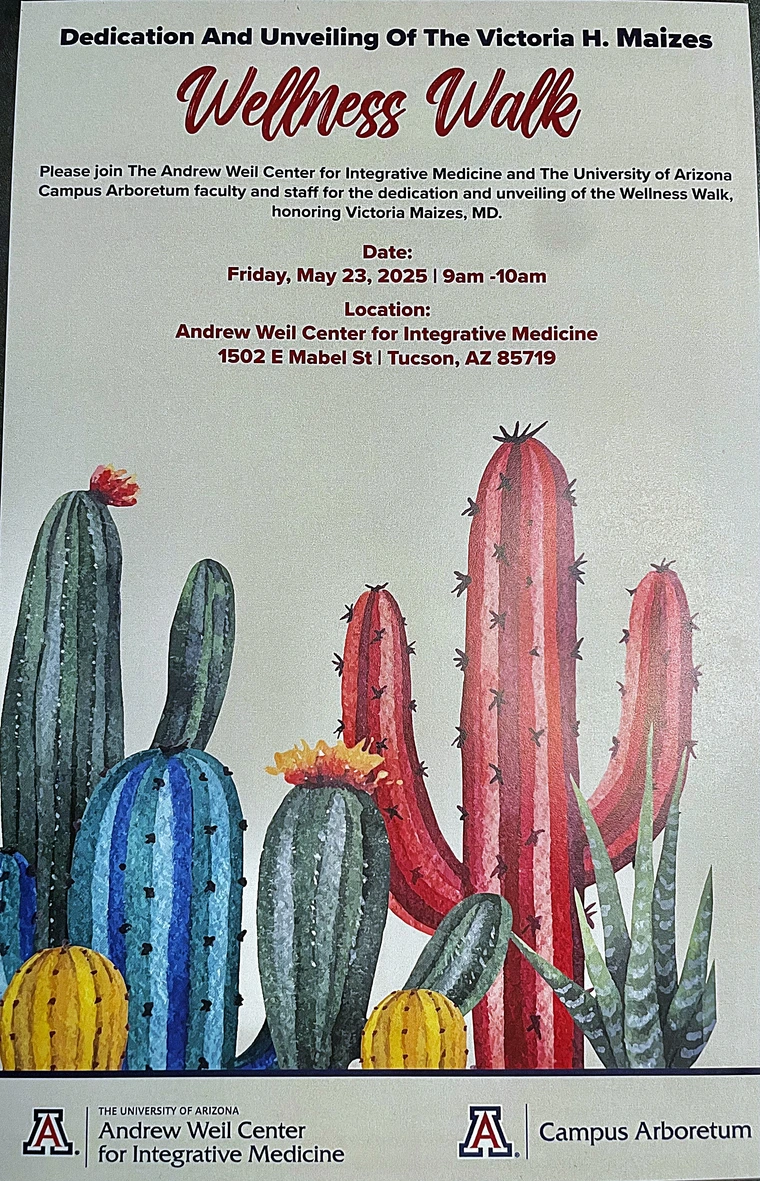Image

When
9 – 10 a.m., May 23, 2025
You are invited to the dedication of the Dr. Victoria Maizes Wellness Walk, a living tribute to the vision and leadership of Dr. Victoria Maizes, Founding Director of the Andrew Weil Center for Integrative Medicine. Developed in collaboration with the University of Arizona Campus Arboretum, the Victoria Maizes Wellness Walk offers a guided experience through native desert plants, accompanied by prompts that invite reflection, presence, and connection to the natural world on campus. The dedication ceremony will include brief remarks from invited speakers Dr. Andrew Weil, Dr. Mari Ricker, and Dr. Tanya Quist, a sparkling toast, and an opportunity to experience the walk in community.
Image


